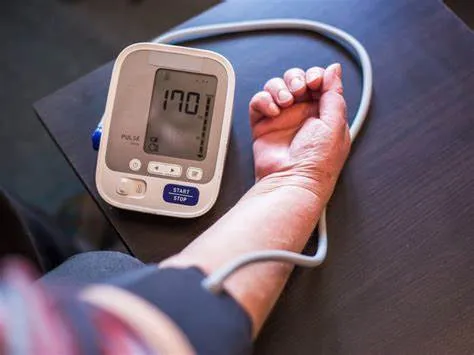High blood pressure, often referred to as a “silent killer,” is a leading cause of stroke, heart attack, and kidney disease, claiming tens of thousands of lives each year, particularly in the UK, where half a million people suffer from dangerously high levels. A recent breakthrough in the treatment of high blood pressure could offer hope to many patients, particularly those suffering from a rare condition known as primary aldosteronism, which is responsible for one in every 20 cases of high blood pressure. This innovative therapy, known as targeted thermal therapy (TTT), could potentially cure this form of high blood pressure and transform the lives of many individuals who currently live with this debilitating condition.
Primary aldosteronism is a condition in which the adrenal glands, which sit above the kidneys, produce excessive amounts of aldosterone—a steroid hormone that plays a crucial role in regulating salt levels in the body. When these adrenal glands develop nodules, they begin to release more aldosterone than is necessary, causing the kidneys to retain excess salt instead of flushing it out. This leads to a dangerous buildup of sodium in the body, which results in high blood pressure or hypertension. In severe cases, this can cause blood pressure readings as high as 200/130, which is far above the healthy threshold of 120/80. As a result, individuals with primary aldosteronism face an increased risk of heart attack, stroke, and other cardiovascular events.
For many years, primary aldosteronism has been treated with medication, typically spironolactone, a drug that blocks aldosterone. However, not all patients respond well to this medication, and some continue to live with uncontrolled high blood pressure. Surgery, specifically the removal of the affected adrenal glands, has been another treatment option, but this procedure is invasive, requiring general anesthesia and a hospital stay of several days. Despite being effective in some cases, the need for such major surgery has made the condition challenging to manage for both patients and healthcare professionals alike.
Now, thanks to the pioneering work of doctors in London and Cambridge, a new technique called targeted thermal therapy (TTT) offers a less invasive and potentially more effective treatment option. This innovative therapy, also known as endoscopic ultrasound-guided radiofrequency ablation, uses short bursts of intense heat delivered through a needle to burn away the nodules that are causing the excess production of aldosterone. In just 20 minutes, the procedure can destroy the problematic nodules, significantly reducing the production of aldosterone and consequently normalizing blood pressure. The best part of this treatment is that it is minimally invasive, performed under sedation, and allows patients to return home on the same day.
A recent trial of TTT, which was published in The Lancet, included 28 patients with primary aldosteronism, and the results were highly promising. The trial showed that four patients were able to stop taking medication entirely after undergoing the procedure. Additionally, another 12 patients saw a significant improvement in their blood pressure levels, with some halving their medication intake. Remarkably, the procedure was able to stop the body from producing excess aldosterone in three-quarters of the participants. This suggests that TTT could be an effective long-term solution for many patients who struggle to control their blood pressure through medication alone.
Professor Morris Brown, a co-author of the study and a leading endocrinologist at Barts Health NHS Trust in London, explained that the procedure could be life-changing for people suffering from primary aldosteronism. According to Professor Brown, this new treatment could reduce the risk of heart attack, stroke, and heart arrhythmias in one in every 20 people with high blood pressure. He emphasized the transformative effects that patients often experience, saying, “They feel better, they have more energy, they are less depressed, and they achieve a normal blood pressure without having to take medication every day or having surgery.” This development is particularly exciting because primary aldosteronism has long been a condition that lacked effective treatment options, and many patients have been reliant on medications that did not provide adequate control over their blood pressure.
One of the most significant benefits of TTT is its minimally invasive nature. Unlike traditional surgery, which requires the removal of the adrenal glands and a lengthy hospital stay, TTT is a quick, outpatient procedure. The patients in the study were able to go home the same day, and many reported immediate improvements in their blood pressure. Professor Brown described the immediate impact of the procedure: “It’s very exciting when people who’ve had uncontrolled high blood pressure for years have this procedure and come home the same day and find that their blood pressure is back to normal literally the next day.”
The potential for TTT to revolutionize the treatment of primary aldosteronism is immense, and experts believe that it could offer a cure to many individuals who otherwise would have had to rely on long-term medication or undergo risky surgery. Dr. Pauline Swift, the chair of Blood Pressure UK, praised the results of the initial trial, calling the technique “safe and effective.” She added, “There are potentially many individuals living with high blood pressure that may benefit from this new treatment.”
While the initial trial included just 28 patients, a larger trial involving 110 patients is already underway to further assess the effectiveness of TTT. The early results from this expanded study are expected to provide even more insight into the long-term benefits of this treatment, and the hope is that it will become a standard option for patients with primary aldosteronism in the near future.
The development of TTT represents a significant breakthrough in the management of high blood pressure, particularly for those whose condition is caused by primary aldosteronism. This treatment is poised to offer a new lease on life for patients who have long struggled with uncontrolled hypertension, improving their quality of life and reducing the risk of life-threatening complications. Furthermore, it could dramatically reduce the number of people who require invasive surgeries to treat their high blood pressure, offering a safer, less painful, and more effective alternative.
In conclusion, the introduction of targeted thermal therapy (TTT) for the treatment of primary aldosteronism could prove to be a game-changer in the field of hypertension management. By effectively targeting and eliminating the nodules responsible for excess aldosterone production, this innovative procedure offers hope for many patients who have been unable to control their blood pressure through conventional treatments. With ongoing trials and research, it is likely that TTT will become a key treatment option for high blood pressure in the near future, transforming the lives of millions of people worldwide.























